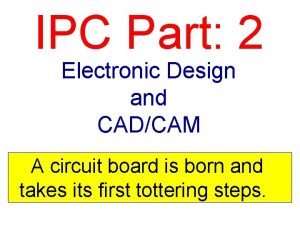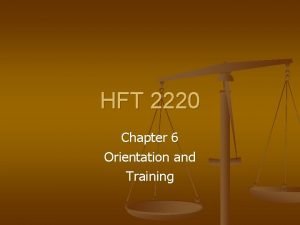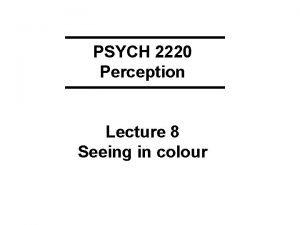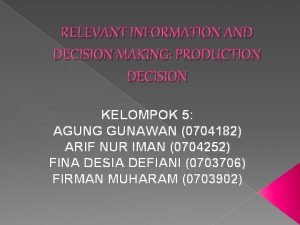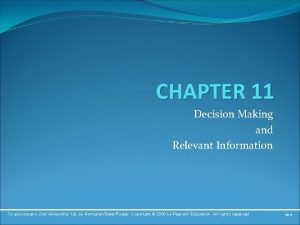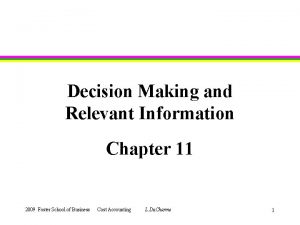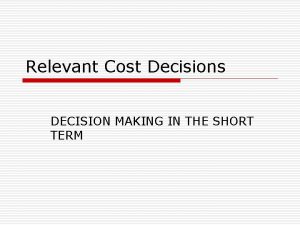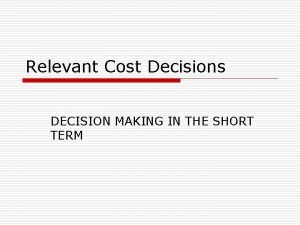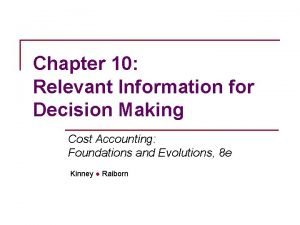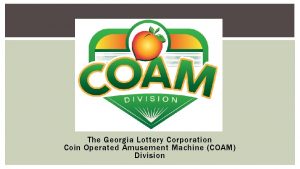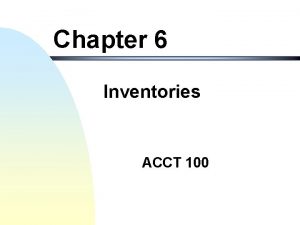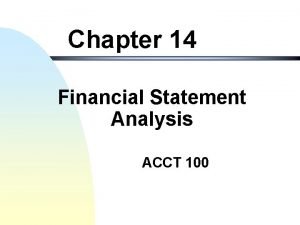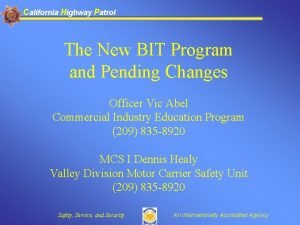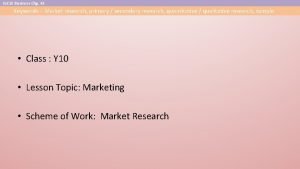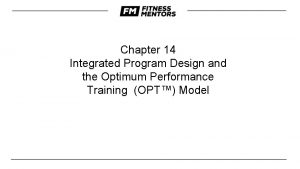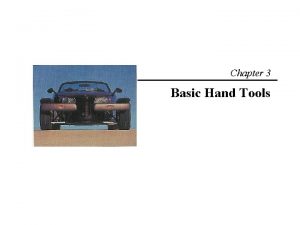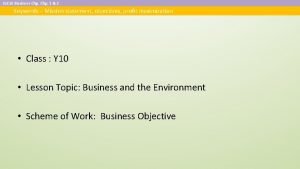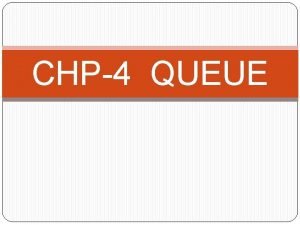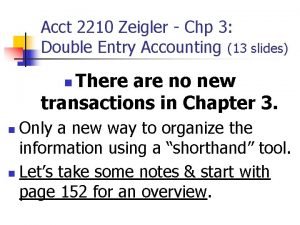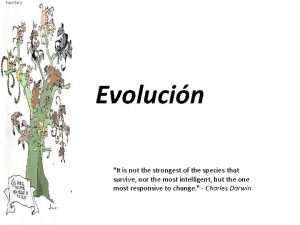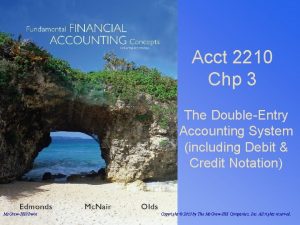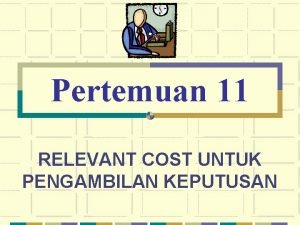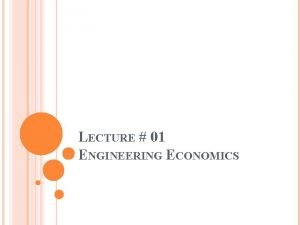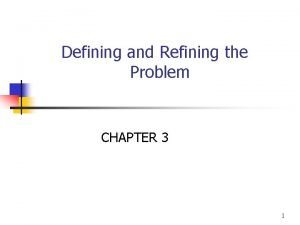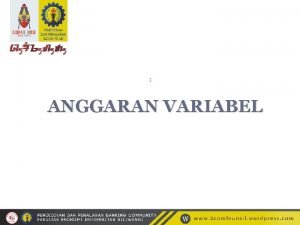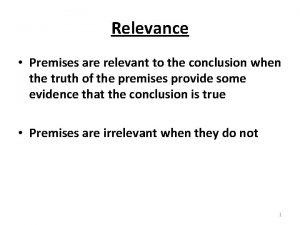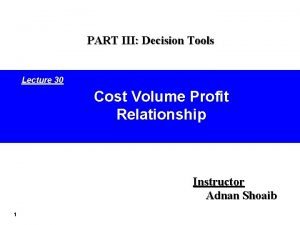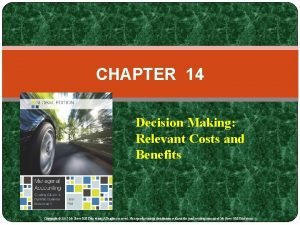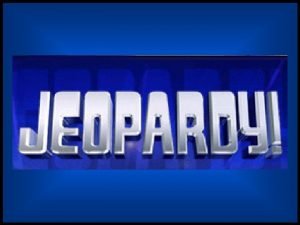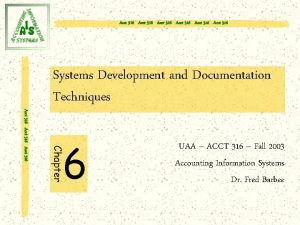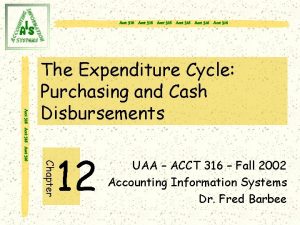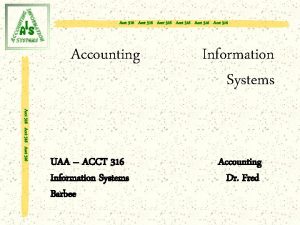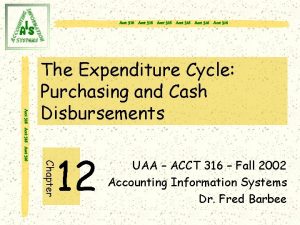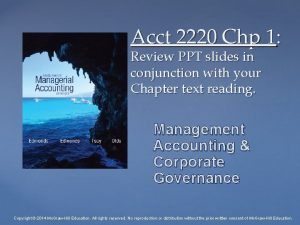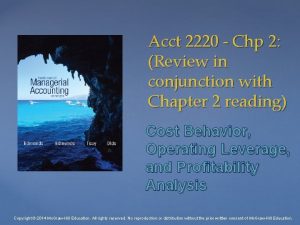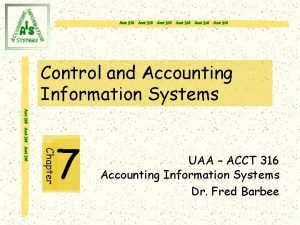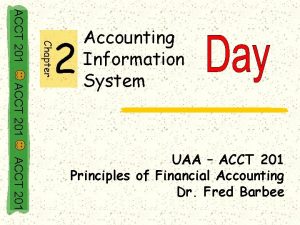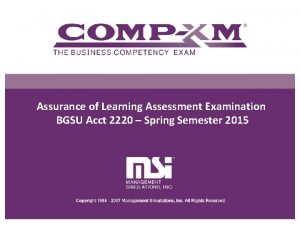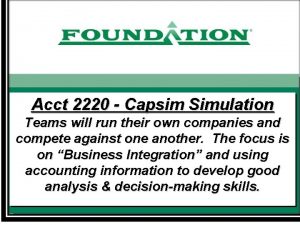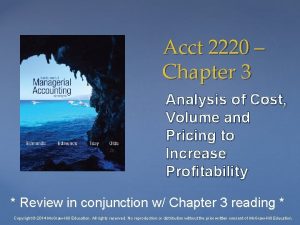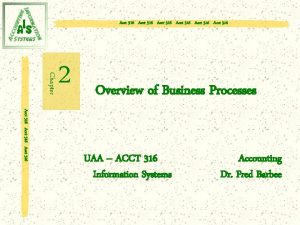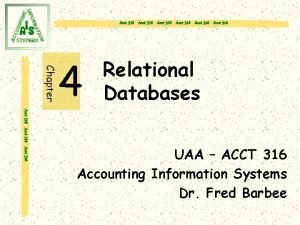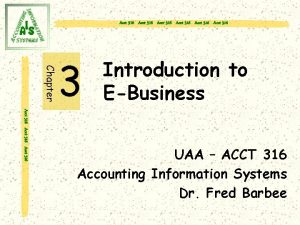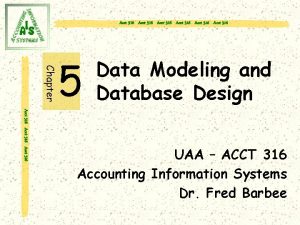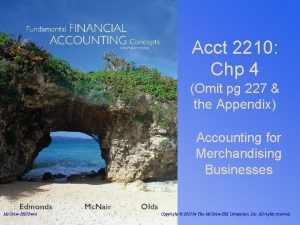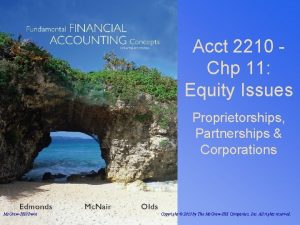Acct 2220 Chp 6 Relevant Information for Special







































- Slides: 39

Acct 2220 – Chp 6 “Relevant Information” for Special Decisions Copyright © 2014 Mc. Graw-Hill Education. All rights reserved. No reproduction or distribution without the prior written consent of Mc. Graw-Hill Education.

Learning Objective Identify the characteristics of relevant information. LO 1 6 -2

Relevant Information Two primary characteristics distinguish relevant from useless information: 1. Relevant information differs among the alternatives under consideration. 2. Relevant information is future oriented. 6 -3

Sunk Cost A sunk cost has been incurred in a past transaction and cannot be changed. It is not relevant for making current decisions. You’ve already taken the loss. The $25, 000 is a sunk cost. Like I said, Juststock sell the andstock buy car! theand car buy you the need. I wish I hadn’t bought that stock. Cost me $25, 000, and now it’s worth only I$15, 000. don’t want to take I really need a car loss! butthe don’t have the cash! 6 -4

Opportunity Costs An opportunity cost is the sacrifice that is incurred in order to obtain an alternative opportunity. The opportunity cost of owning the stock is $15, 000. That is the amount you could receive if you decide to sell. I think I am beginning to see what you mean. 6 -5

Relevance is an Independent Concept Management at Better Bakery Products is debating whether to add a new product, either cakes or pies, to the company’s product line. Projected costs are shown: Under either alternative, a new production supervisor must be hired at a cost of $25, 000 per year. Cakes are distributed under a nationally advertised label. Pies are marketed under the company’s own name and will require new advertising. 6 -6

Relevance is an Independent Concept Which costs are relevant? Material costs are relevant because they differ. Fifty cents can be avoided by choosing cakes instead of pies. Labor costs and the supervisor’s salary are not relevant because they do not differ. The advertising costs can be avoided if the company elects to make cakes. The franchise fee can be avoided if the company elects to make pies. Whether a cost is fixed or variable has no bearing on its relevance. 6 -7

Relevance is Context-Sensitive A particular cost that is relevant in one context may be irrelevant in another. No, the store manager’s salary will be the same if children’s clothing is no longer sold. A department store sells men’s, women’s, and children’s clothing. The store manager’s salary could not be eliminated if the store eliminated the line of children’s clothing. Is the store manager’s salary relevant to the decision to stop selling children’s clothing? 6 -8

Relevance is Context-Sensitive A particular cost that is relevant in one context may be irrelevant in another. Would the store manager’s salary be a relevant cost, if the company was thinking about closing the store completely? Yes, it is a relevant cost. If the store remains open, the company will incur the manager’s salary. If the store is closed, the cost will be eliminated. 6 -9

Relationship Between Relevance and Accuracy Information need not be exact to be relevant. You may be considering the purchase of a laptop computer. You may decide to delay your decision because you think the price will decrease. You are not sure of the amount of the price drop, but you do believe part of the cost can be avoided by waiting. 6 -10

Quantitative Versus Qualitative Characteristics Relevant information can have both quantitative and qualitative characteristics. For example, suppose you are deciding which of two laptops A purchase. quantitative focus considers qualitative considers to Computer A costs $300 Amore than focus Computer B. the cost, increase insatisfy profits, or non-quantitative aspects such Both computers your technical requirements; however other numerical aspects of thea more attractive as theappearance impact on people and Computer A has decision. Computer A attractiveness of the products. Computer B 6 -11

Differential Revenue and Avoidable Cost Relevant revenues must (1) be future oriented and (2) differ for the alternatives under consideration. Since relevant revenues differ between the alternatives, they are sometimes called differential revenues. 6 -12

Differential Revenue and Avoidable Cost Avoidable costs are the costs managers can eliminate by making specific choices. 6 -13

Relevant (Avoidable) Costs Unit-level Costs Avoided by eliminating one unit of product. Batch-level Costs Avoided when a batch of work is eliminated. Product-level Costs Avoided if a product line is eliminated. Facility-level Costs Some costs may be avoided if a business segment is eliminated. 6 -14

Check Yourself Aqua, Inc. , makes statues for use in fountains. On January 1, 2014, the company paid $13, 500 for a mold to make a particular type of statue. The mold had an expected life of four years and a salvage value of $1, 500. On January 1, 2016, the mold had a market value of $3, 000, and a salvage value of $1, 200. The expected useful life did not change. What is the relevant cost of using the mold during 2016? ($3, 000 – $1, 200) ÷ 2 years = $900 Of course, Aqua could avoid the cost by selling the mold for its market value of $3, 000. 6 -15

Learning Objective Make appropriate special order decisions. LO 2 6 -16

Relevant Information and Special Decisions Occasionally, a company receives an offer to sell its product at a price significantly below its normal selling price. The company must make a special order decision to accept or reject the offer. 6 -17

Exhibit 6. 1 Here is budgeted cost information for Premier, a company that produces printers. The company has enough capacity to produce additional printers, but is planning to produce to meet current demand. Cost per unit : $658, 500 ÷ 2, 000 = $329. 25 6 -18

Special Order Decision A foreign customer offers to purchase 200 printers at $250 per printer. This price is well below the unit cost of $329. 25. Should the company accept this one time order? If the order is accepted, profitability will increase by $11, 800. 6 -19

Special Order Decision Opportunity Costs Premier has excess productive capacity. Suppose Premier has the opportunity to lease its excess capacity (unused building and equipment) for $15, 000. Should Premier accept the special offer given this new information? If the order is accepted, profitability will decrease by $3, 200. 6 -20

Special Order Decision Relevance and the Decision Context If Premier can increase income by selling its printers for $250, can the company reduce its normal selling price to $250? 6 -21

Special Order Decision Qualitative Characteristics Should a company ever reject a special order if the relevant revenues exceed the relevant costs? What will happen if Premier’s regular customers learn that the company sold printers to another buyer for $250 per unit? 6 -22

Learning Objective Make appropriate outsourcing decisions. LO 3 6 -23

Outsourcing Decisions Companies can sometimes purchase products needed in the manufacturing process for less than it would cost to make them. Buying goods and services from other companies rather than producing them internally is commonly called outsourcing That test was so easy. How did you score so low? I outsourced my homework!! 6 -24

Outsourcing Decisions Let’s return to our Premier example. Recall that the unit cost per printer was $329. 25. A supplier offers to sell an unlimited number of printers to Premier for $240 each. Should Premier accept this outsourcing offer? Step 1: Determine the production costs Premier can avoid if it elects to outsource printer production. Cost per unit = $459, 300 ÷ 2, 000 = $229. 65 6 -25

Outsourcing Decisions Step 2: Compare the avoidable production costs with the cost of buying the product and select the lower-cost option. Premier should reject the outsourcing offer. 6 -26

Outsourcing Decisions Opportunity Costs If Premier purchases the printers, it could use its manufacturing should printers space for. Management storing finished goodspurchase inventory. the Premier is currently because the price of at $240 is below the cost of renting warehouse space the cost of $40, 000. Should $249. 65 when the opportunity cost is printers? factored in. Premier continue to manufacture the Cost per unit = $499, 300 ÷ 2, 000 = $249. 65 6 -27

Evaluating Growth on the Level of Production The decision to outsource would change if expected production increases from 2, 000 to 3, 000 units. Some Management reject thetooffer, but if growth avoidable costsshould are fixed relative production, so cost isper expected in the future it must be factored into unit decreases as volume increases. If Premier decision. outsourcesmanagement’s the 3, 000 printers it will save $40, 000 currently being spent on warehouse space. Cost per unit = $690, 300 ÷ 3, 000 = $230. 10 6 -28

Qualitative Features A company that uses vertical integration controls the full range of activities from acquiring raw materials to distributing goods and services. An oil company, like Exxon. Mobil, is a good example of vertical integration. Outsourcing reduces the level of vertical integration, passing some of a company’s control over its production to outside suppliers. 6 -29

Learning Objective Make appropriate segment elimination decisions. LO 4 6 -30

Segment Elimination Decisions Businesses are frequently organized into operating units known as segments. Segment reports can be prepared for products, services, departments, branches, centers, offices, or divisions. These reports normally show segment revenues and costs. Let’s look at a segment report for Premier Office Products that has divided its operations into three segments: (1) copiers, (2) computers, and (3) printers. 6 -31

Should management eliminate the copier segment? 6 -32

Segment Elimination Decisions A three step decision: 1. Determine the amount of relevant revenue that pertains to eliminating the segment. 2. Determine the amount of cost that can be avoided if the segment is eliminated. 3. If the relevant revenue is less than the avoidable cost, eliminate the segment. If not, continue to operate it. 6 -33

Segment Elimination Decisions Step 1: If Premier eliminates the copier segment, it will lose the $550, 000 of revenue currently earned. If the segment continues, the revenue will be earned. Since the revenue differs between the alternatives, it is relevant. 6 -34

Segment Elimination Decisions Step 2: If Premier eliminates copiers, it will avoid the following costs: 6 -35

Segment Elimination Decisions Step 3: If Premier eliminates copiers, its profits will decrease: The corporate-level facility-sustaining costs will not be eliminated, but will be allocated to the remaining segments. 6 -36

Qualitative Considerations 1. Employee lives will be disrupted. 2. Sales of different product lines are frequently interdependent. 3. What will happen to the space freed by the eliminated segment? 4. Volume changes can affect elimination decisions. 6 -37

Relationships Between Avoidable Costs and Business Activities 1. Special order decisions affect unit-level and possibly batch-level costs. 2. Outsourcing can avoid many product-level as well as unit- and batch-level costs. 3. Segment elimination can avoid some of the facility-level costs. The more complex the decision level, the more opportunities there are to avoid costs. 6 -38

End of Chapter 6 6 -39
 Ipc-2220
Ipc-2220 Hft 2220
Hft 2220 Seeing 2220
Seeing 2220 Decision making and relevant information
Decision making and relevant information 5 step decision making process
5 step decision making process Select significant and relevant information
Select significant and relevant information Relevant information for decision making
Relevant information for decision making Chapter 11 decision making and relevant information
Chapter 11 decision making and relevant information Decision making and relevant information
Decision making and relevant information Steps in decision making
Steps in decision making Decision making and relevant information
Decision making and relevant information Relevant information for decision making
Relevant information for decision making Georgia coam
Georgia coam Acct 100
Acct 100 Chapter 5 accounting for merchandising operations
Chapter 5 accounting for merchandising operations Where is preferred dividends on financial statements
Where is preferred dividends on financial statements Bit program california
Bit program california Association for challenge course technology
Association for challenge course technology Hardvarf
Hardvarf Chp
Chp Opt model phases
Opt model phases What are the 5 major discourses in matthew
What are the 5 major discourses in matthew Struck or hammered tools
Struck or hammered tools Mission statement keywords
Mission statement keywords Chp 4
Chp 4 Acct 2210
Acct 2210 Chp 14
Chp 14 Decp
Decp Tipos de selección natural
Tipos de selección natural Chp christiansburg va
Chp christiansburg va Acct 2210
Acct 2210 What are irrelevant sentences
What are irrelevant sentences Relevant cost adalah
Relevant cost adalah Consider all relevant criteria
Consider all relevant criteria Defining and refining the problem ppt
Defining and refining the problem ppt Culturally responsive vs culturally relevant
Culturally responsive vs culturally relevant Pengertian anggaran variabel
Pengertian anggaran variabel Affirm the antecedent
Affirm the antecedent Contribution formula
Contribution formula Relevant cost for decision making exercises
Relevant cost for decision making exercises
